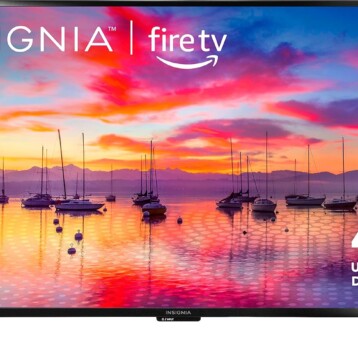In the rapidly evolving landscape of television technology, Hisense has carved a niche for itself by offering high-quality, feature-packed TVs at budget-friendly prices. For those who admire the sleek designs and advanced technologies of Hisense televisions, a common question arises: Who makes Hisense TVs? This article delves deep into the origins, manufacturing processes, and market positioning of Hisense TVs, unraveling the story of a brand that has become a household name globally.
Who Manufactures Hisense TVs?
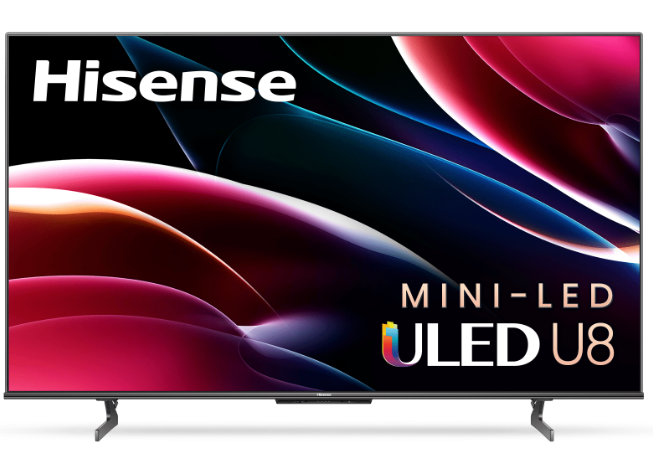
Hisense TVs come from Hisense Company Limited, still an affiliate of the bigger Hisense Group. From very simple beginnings back in 1969 at Qingdao, China, where it was once a radio plant, Hisense has grown into a global electronics giant. With plants set up in China, Mexico, South Africa, and Hungary, among other locations, Hisense satisfies diverse markets while also reaching those markets fairly efficiently.
A Brief Introduction to Hisense
Hisense Group today epitomizes innovation potential with strategic growth that started from the smallest beginnings to being a multination company, and it offers an excellent portfolio of consumer electronics, appliances, to IT services.
A Voyage of Discovery
In its initial years, the firm manufactured radios from a small factory. Hisense’s first television from the 1970s serves as the basis for the current leadership of Hisense in the world TV market. Over time, Hisense has focused on improving better technologies, expanded its products, and introduced its goods into international markets.
Global Reaches and Market Share
Hisense has adopted aggressive expansion strategies for penetrating more than 160 countries. Head-to-head competition with industry giants, like Samsung, LG, and Sony has been followed. By 2023, Hisense’s global market share has touched 7.8%, ranking among the world’s top five TV manufacturers.
The Producers Of The Hisense TVs
However, this requires examining the organisational structure and manufacturing strategies in order to fully understand who makes Hisense TVs.
Hisense Company Limited
Being a subsidiary of the state-owned Hisense Group, Hisense Company Limited also enjoys government support while working independently. This is one advantage that enables the company to innovate and expand without much financial constraint.
Global Manufacturing Footprint
Hisense’s production facilities are located strategically across the world in order to optimize logistics and cost-cutting. Prime manufacturing sites are:
- China: Leading Research, Development and Production Location.
- Mexico: Supplies the North American market.
- South Africa: Market for African and Middle Eastern markets.
- Europe: Hungarian factories sell to their customers in Europe.
This will ensure that Hisense TVs meet the regional demands and also are cost-effective.
Strategic Alliances and Acquisitions
Hisense increased its capacity by strategic partnership and acquisition. In 2017, for instance, Hisense acquired Toshiba’s TV business from Japan, expanding its production capacity while acquiring authority access to advanced TV technologies and patents.
Also Read: How to Download Apps on Hisense Smart TV [All Models]
Inside Hisense TV Manufacturing Process
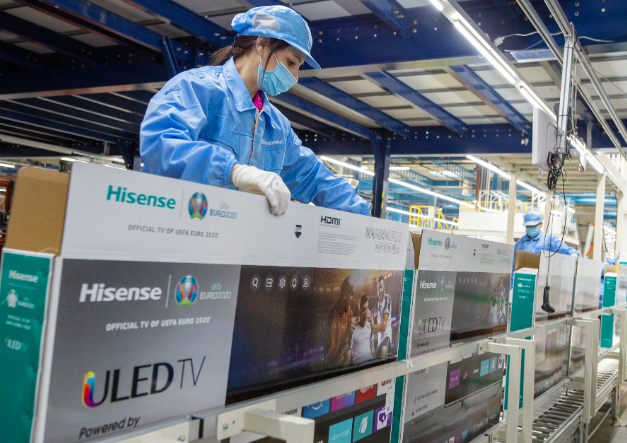
Hisense produces its television products with an obsession over quality, as every unit produced is strictly adhered to the set standards.
Research and Development (R&D)
Innovation is at the core of Hisense’s success. Hisense invests heavily in R&D as well, targeting areas such as:
- Display Technologies: Improved color accuracy, luminance, and energy efficiency..
- Smart TV Features: Developing intuitive interfaces and integrating AI for more personalized viewing experiences.
- Audio systems: Higher quality sound and new innovations in soundbar technologies.
Component Sourcing and Quality Control
The quality components are sourced from reliable sources, and quality checks are maintained at each stage of manufacturing:
- Entry element inspection
- Mid-production quality control
- Post-assembly testing
Also Read: How Do You Install Apps on Hisense Smart TV
Integration and Testing
Hisense uses advanced automation in their assembly lines, along with highly skilled technicians. Every TV undergoes rather extreme testing, including:
- Image quality reviews
- Durability stress tests
- Functionality checks for smart features
Technological Innovations in Hisense TVs
Hisense has introduced cutting-edge technologies to enhance the viewing experience.
Proprietary Technologies
- ULED: Hisense’s Ultra LED technology rivals QLED by improving contrast, motion clarity, and color performance.
- Quantum Dot Displays: Found in higher-end models, offering vibrant colors and superior brightness.
- AI Picture Optimization: Adjusts image quality in real-time based on content.
- Laser TV: Hisense’s flagship projection TV technology for ultra-large screen sizes.
Comparison with Competitors
While premium brands like Samsung and LG lead in OLED technology, Hisense bridges the gap by delivering comparable features at more affordable prices.
Future Innovations
Hisense is actively exploring:
- 8K resolution: Elevating picture clarity and detail.
- MicroLED technology: Enhancing energy efficiency and contrast.
- Advanced AI integration: Simplifying navigation and personalization.
Also Read: Hisense TV Red Light Blinking Issue: Solved
Hisense’s Diverse Product Line
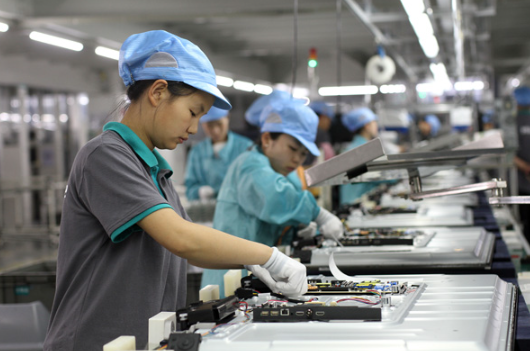
Hisense caters to a wide range of consumers with its versatile TV lineup.
Overview of Models
- Entry-level TVs: Budget-friendly options with essential features.
- Mid-range ULED TVs: Enhanced picture quality and smart capabilities.
- Premium Quantum Dot TVs: For cinephiles and gaming enthusiasts.
- Laser TVs: Offering a theater-like experience at home.
Price Range and Features
- Budget Models: $200–$500
- Mid-Range TVs: $500–$1000
- Premium TVs: $1000–$3000
- Laser TVs: $2000–$10,000
This range ensures there’s a Hisense TV for every budget and preference.
Reliability and Quality of Hisense TVs
Certifications and Standards
Hisense TVs comply with industry standards, including:
- ISO 9001: For quality management.
- Energy Star: For energy efficiency.
- UL certification: For safety.
Customer Feedback
Consumers frequently praise Hisense TVs for their value for money, noting impressive picture quality and robust smart features. However, some common complaints include occasional software glitches and panel inconsistencies in budget models.
Warranty and After-Sales Service
Hisense offers competitive warranties, typically covering 1-2 years with optional extensions. Their improving after-sales network ensures prompt customer support.
Also Read: What Sizes Do You See For A TV?
Hisense’s Global Market Position
With a 7.8% global market share, Hisense is a formidable player in the TV industry.
Competitive Advantages
- Affordable pricing
- Innovative technologies like ULED
- Global production capabilities
Challenges
- Overcoming perceptions as a “budget” brand.
- Keeping pace with rapidly evolving technologies.
Expansion Plans
Hisense aims to strengthen its presence in North America and Europe, with ongoing investments in R&D and premium product lines.
Hisense TVs vs. Competitors
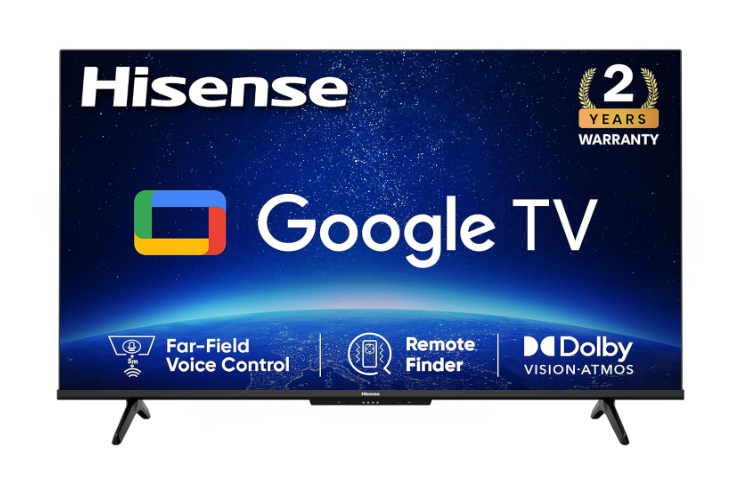
When pitted against major brands, Hisense excels in offering:
- Competitive pricing: Similar features at lower prices.
- High picture quality: Especially in mid-range and premium models.
- Versatile smart platforms: Android TV and VIDAA OS.
However, Samsung, Sony, and LG continue to dominate the ultra-premium segment with OLED and superior HDR technologies.
Also Read: What Are the Dimensions of a 65-inch TV?
Buying Guide for Hisense TVs
Factors to Consider
- Screen Size: Match your TV to your viewing space.
- Resolution: Choose between 4K and 8K.
- Refresh Rate: Look for 120Hz models if you’re into gaming.
- Smart Features: Decide between Android TV or VIDAA OS.
Best Models for Different Budgets
- Budget: Hisense A6 Series
- Mid-Range: Hisense U6 Series
- Premium: Hisense U8 Series
- Luxury: Hisense Laser TV
Common Questions About Hisense TVs
- Are Hisense TVs Reliable?
Yes, Hisense TVs are reliable, especially considering their affordability. - What is ULED Technology?
ULED enhances LED backlighting for improved picture quality. - Can Hisense TVs Be Wall-Mounted?
Yes, most models are VESA-compatible for wall mounting.
Conclusion
A rare hidden gem of the television-making industry, Hisense offers affordability along with innovation. Hailing from the most humble of beginnings in China, it has, through the years, become a global player in its efforts to keep quality and satisfaction from its customers intact.
Whether you’re a budget-conscious buyer or a tech-savvy enthusiast, Hisense TVs offer an excellent balance of performance, features, and price. With continuous investments in R&D and strategic expansion, the future looks bright for this hidden player behind some of the world’s best-value TVs.

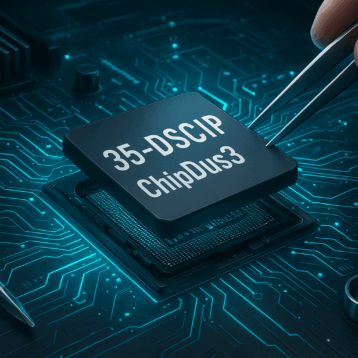
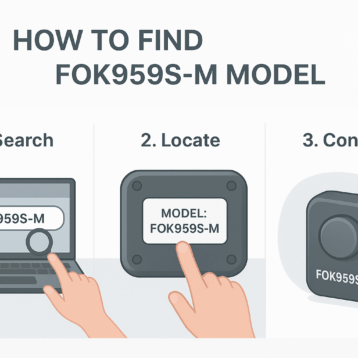




![How to Reset Insignia TV [Step-By-Step Guide]](https://thefutureofthings.com/wp-content/uploads/2025/01/Insignia-Roku-TV-358x358.png)


